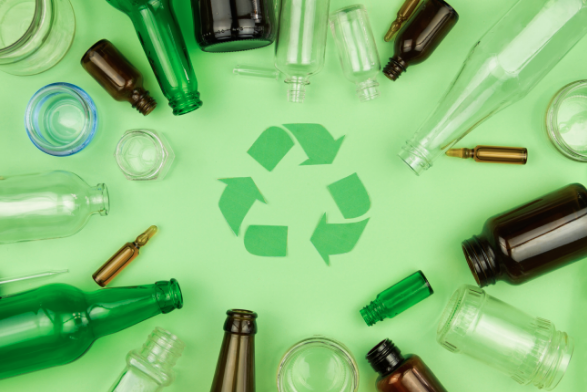Life exists in a complete full circle. Washing your hands might wash away the tiny plastic particles stuck to you from your daily life. The same single-particle from that water might end up coming back to you, one way or another. That is how nature behaves in a domino-effect. Similarly, the waste we produce on our daily basis eventually ends up getting dumped at landfills or rivers. From rivers, the waste is carried with the flow towards the seas and from there the water currants steer it into the oceans. It is estimated that 80% of all the waste in the oceans originated from land. This waste is present in all shapes and sizes. Much of it is not even visible to the naked eye. These are known as microplastics and they can easily leave aquatic life compromised. Therefore, the waste we may discard today is going to come back to us in the face of a marine life crisis. It is for our own sake that we produce minimal waste, and reuse and recycle as much as possible.
- Cleaning Up the Oceans - It is high time that oceans are cleaned up of the waste we have been carelessly producing. Non-profit projects like ‘the ocean cleanup’ are trying to collect the already accumulated waste and recycle it to produce something of value. However, if we continue to produce waste like we normally do, it will continue to pollute our oceans and aquatic life. Therefore, just as nonprofit projects are doing their part to save the planet, we can play our part on an individual level. We can start by adapting to the zero-waste lifestyle and monitor our waste disposal habits. Reusing, recycling, and reducing should be the motto to lead a sustainable life. And just as the oceans are being cleaned up, we can rest assured that ocean pollution will come to a halt, restoring the habitat of marine life to thrive for our own good.
- Real-time Results - The efforts of cleaning up the ocean have been successful but they have a long way to go towards actually making a significant impact. The great pacific garbage patch is the world’s largest gyre of plastic waste in the Pacific Ocean. According to Ocean Voyages Institute, 103 tons of plastic waste was collected and removed from the great pacific garbage patch. This is just from a single voyage that took 48 days at sea. Similarly, more voyages will be carried out with a fleet to ensure the task is accomplished in less time and with more efficiency. The garbage collected will then be recycled to produce indisposable products.


No comments:
Post a Comment